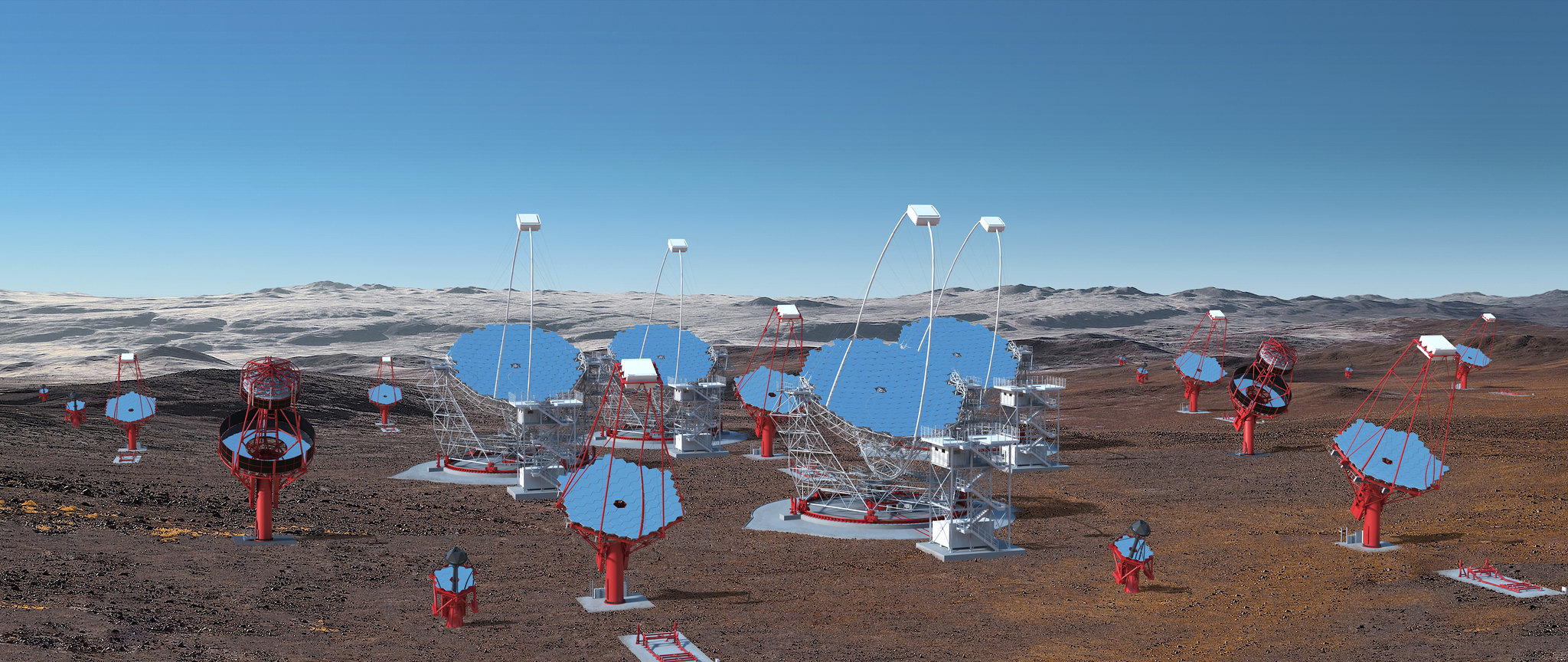Cherenkov Telescope Array Observatory
CTAO is the major upcoming facility for the study of very-high-energy gamma rays. It uses the same detection principle as H.E.S.S. - just with a lot more telescopes. This allows both the observation of fainter sources as well as more precise measurements of the gamma-ray emission. To be able to observe sources on the entire sky, it will be build on two sites: one on the Northern Hemisphere, on La Palma island, Spain, and one on the Southern Hemisphere, in Paranal, Chile.
Below is a rendering of the Northern site on La Palma. It will feature 13 telescopes of two sizes: four “large-size” telescopes with 23-m diameter mirrors and nine “medium-size” telescopes with 12-m mirrors.

The array at the Southern site, illustrated below, will be even larger. It will consist of more than 50 telescopes, and include a third type: the “small-size” telescopes.

The telescopes of different sizes are necessary to cover a range of gamma-ray energies as broad as possible. Low-energy gamma rays produce faint signals, which can only be detected with very large telescopes - but because they are common enough, it suffices to cover with the telescopes a relatively small area on the ground. On the other hand, high-energy gamma rays produce so much light that one can measure them with small telescopes - however, since they are very rare, one needs to place many of them over a large area to collect enough of them.
One of my constributions to CTAO has been in the design of the array layout, which has been optimised based on intensive Monte-Carlo simulations.
Further information:
Image credits: CTAO.
